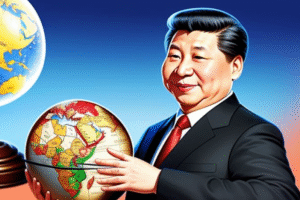$TSLA $GM #Tariffs #DomesticManufacturing #TrumpNews #HeavyTrucks #TradePolicy #Economy #MarketImpact #Manufacturing #SupplyChain #USIndustry
Will Trump’s 25% Tariff on Heavy Trucks Shake Up the Industry from October 1? Find Out How!
In recent *Trump news*, former President Donald Trump has announced a significant 25% tariff on imported heavy trucks, set to take effect on October 1. This bold move forms part of a larger strategy aimed at revitalizing domestic manufacturing and reducing reliance on foreign goods. By imposing these tariffs, Trump seeks to not only bolster American industries but also create jobs and stimulate growth within the economy.
The implications of this tariff are substantial. Analysts predict that the auto industry, particularly manufacturers of heavy trucks, will face a critical juncture. Companies like Ford and General Motors may find themselves in a position to capitalize on this policy by increasing production capacity and investing more heavily in their domestic operations. Conversely, foreign manufacturers such as Daimler and Volvo may experience a drop in sales in the U.S. market, leading to potential shifts in their operational strategies.
Understanding the Tariff’s Impact on the Supply Chain
Furthermore, the imposition of tariffs can have cascading effects across the supply chain. Suppliers of parts and components for heavy trucks will also be affected, as the cost of imported materials may rise. Consequently, this could lead to increased prices for consumers, impacting purchasing decisions and overall market dynamics. As companies adjust their strategies to mitigate the effects of tariffs, consumers may see a change in the availability and pricing of heavy trucks.
Additionally, the broader economic landscape could be influenced by this policy shift. Economists often highlight the delicate balance between protecting domestic industries and maintaining competitive pricing for consumers. While tariffs may boost local production, they can also lead to higher costs for end-users. This intricate balance is crucial for stakeholders in the automotive sector, as well as for policymakers who must navigate the complexities of international trade.
What Will This Mean for Investors?
For investors, the news surrounding Trump’s tariffs could present both challenges and opportunities. Companies that are agile and able to adapt to these changes may see their stock prices rise as they capture market share from foreign competitors. Conversely, investors should be cautious of firms that may struggle with increased operational costs and supply chain disruptions.
As we approach the implementation date, it is essential to monitor developments closely. Investors should keep an eye on key performance indicators such as production rates, sales figures, and consumer sentiment. The automotive sector’s response to these tariffs could serve as a bellwether for broader economic trends in the United States.
In conclusion, Trump’s decision to impose a 25% tariff on heavy truck imports is poised to create ripples throughout the industry. As domestic manufacturers gear up for increased production, the effects on pricing and supply chains will become more evident. For those interested in tracking the evolving landscape of the automotive sector, further insights and analysis can be found at this link. Moreover, for a broader understanding of the economic implications of tariffs and trade policy, resources are available at this link.
As October 1 approaches, stakeholders across the economy must prepare for a potential transformation in the heavy truck market, with implications that may extend well beyond the automotive industry itself.











Comments are closed.